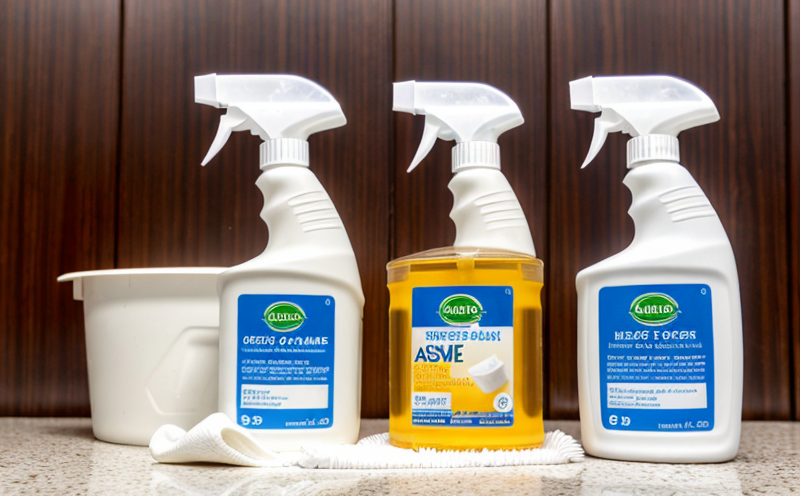AOAC 965 Antibacterial Testing of Cleaning Agents
The AOAC International Standard Method 965.01 is widely recognized as a critical benchmark for assessing the antibacterial efficacy of cleaning agents and hygiene products. This method evaluates the minimum inhibitory concentration (MIC) of an antimicrobial agent against test bacteria, providing a standardized approach to ensure consistent results across various laboratories.
The protocol involves exposing known quantities of test bacteria on agar plates containing the cleaning agent under controlled conditions. The MIC is determined by observing the smallest concentration at which no visible bacterial growth occurs after incubation. This testing not only certifies that a product meets regulatory standards but also ensures consumer confidence in its effectiveness.
The process begins with rigorous preparation of the test samples, including dilution and inoculation into appropriate media. The cleaning agents are then applied to these controlled environments, followed by observation over several days under standardized conditions. Compliance with this method is essential for brands aiming to comply with global hygiene standards such as ISO 12174-1.
The precision of AOAC 965 testing lies in its ability to identify the true efficacy levels of cleaning agents, which can vary widely depending on factors like formulation and application. This method helps manufacturers optimize their products for maximum effectiveness while ensuring they meet stringent hygiene requirements.
Implementing this test also aids quality managers by providing robust data that supports product development decisions. Compliance officers can leverage these results to ensure regulatory adherence, reducing the risk of non-compliance issues. For R&D engineers, it offers valuable insights into formulation adjustments and potential improvements in antibacterial performance.
The widespread adoption of AOAC 965 not only enhances hygiene standards but also fosters trust among consumers who value safe and effective cleaning products. This method plays a pivotal role in the chemical testing sector by setting benchmarks for antibacterial efficacy, ensuring that products meet both industry expectations and consumer needs.
Why It Matters
- Ensures compliance with global hygiene standards such as ISO 12174-1.
- Provides a standardized approach to evaluating the antibacterial efficacy of cleaning agents.
- Offers robust data that supports product development and optimization for maximum effectiveness.
The importance of this testing cannot be overstated, particularly in sectors where hygiene is paramount. By adhering to AOAC 965 standards, manufacturers can enhance the safety and efficacy of their products, thereby protecting public health.
Benefits
- Compliance with Global Standards: Ensures that cleaning agents meet stringent hygiene requirements set by international standards.
- Informed Product Development: Provides valuable insights for R&D engineers to optimize formulations and enhance antibacterial performance.
- Consumer Trust: Builds confidence in the effectiveness of hygiene products, leading to increased consumer satisfaction and loyalty.
Why Choose This Test
- Standardized Methodology: AOAC 965 offers a universally accepted protocol for evaluating antibacterial efficacy, ensuring consistent and reliable results.
- Data-Driven Decisions: The method provides clear data that supports informed decisions in product development and optimization processes.





